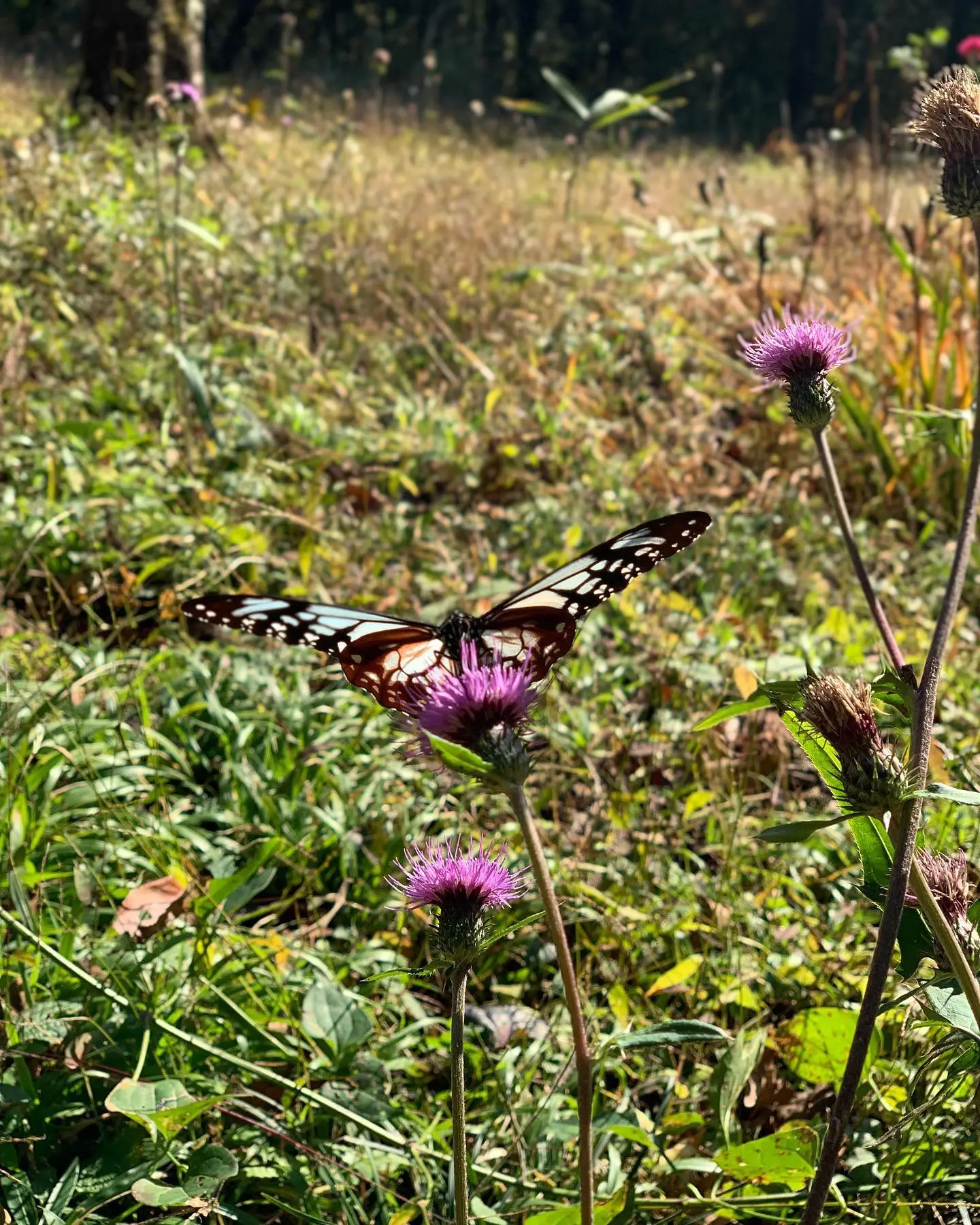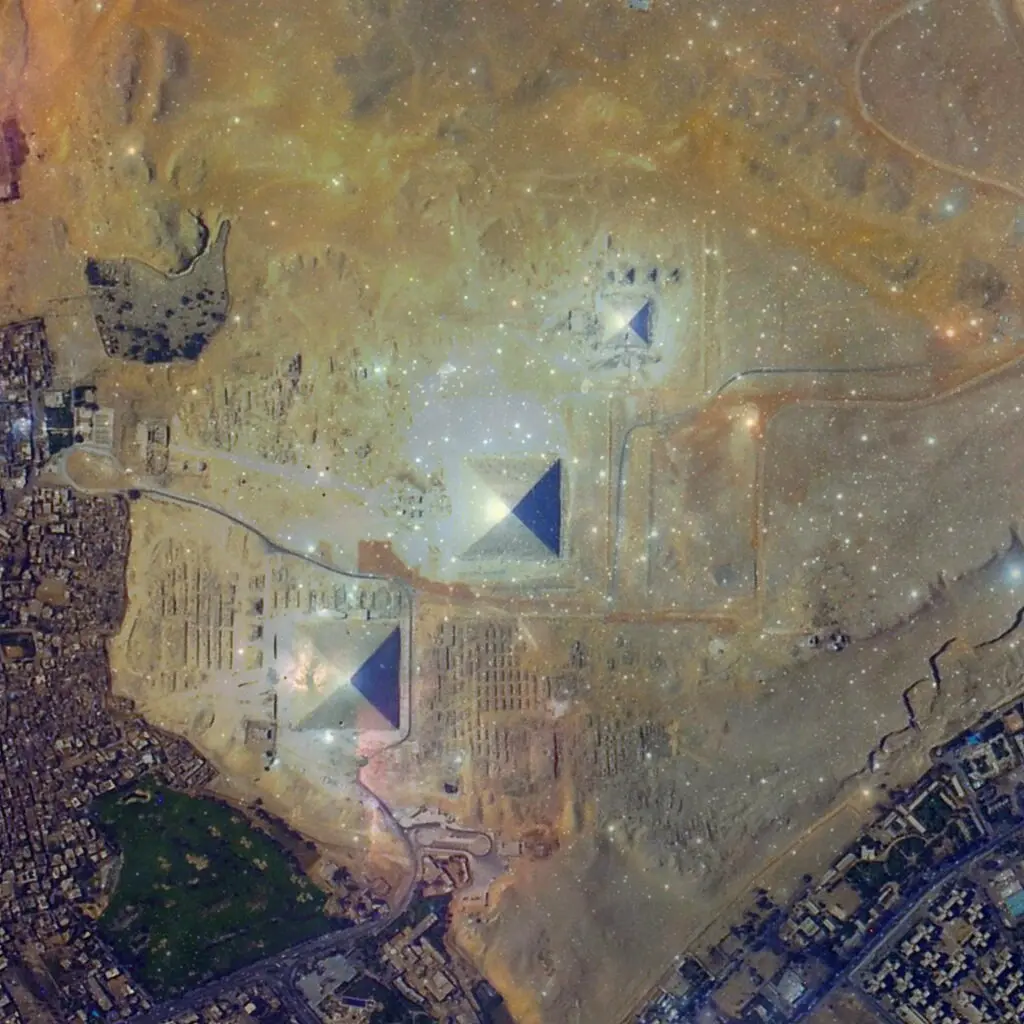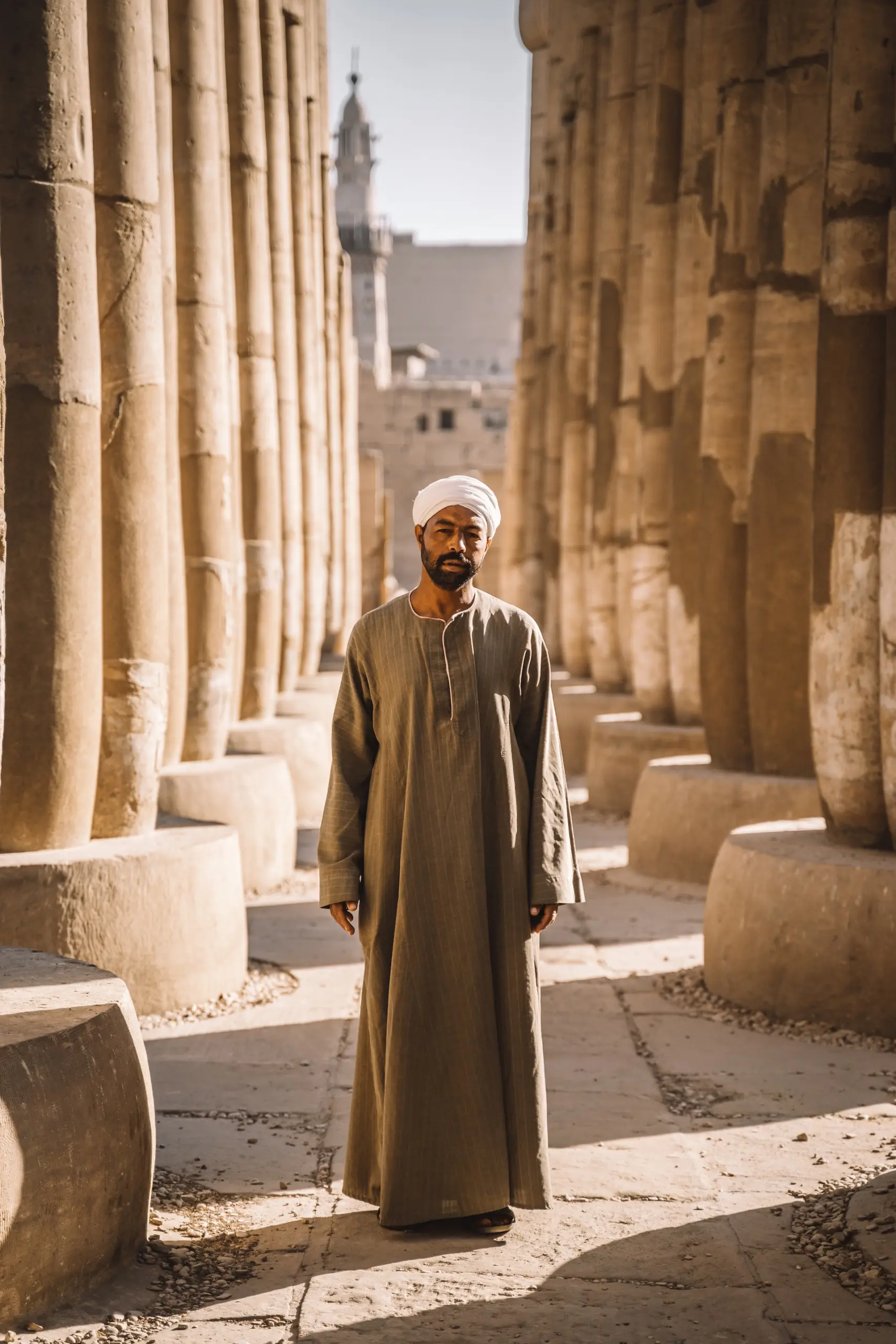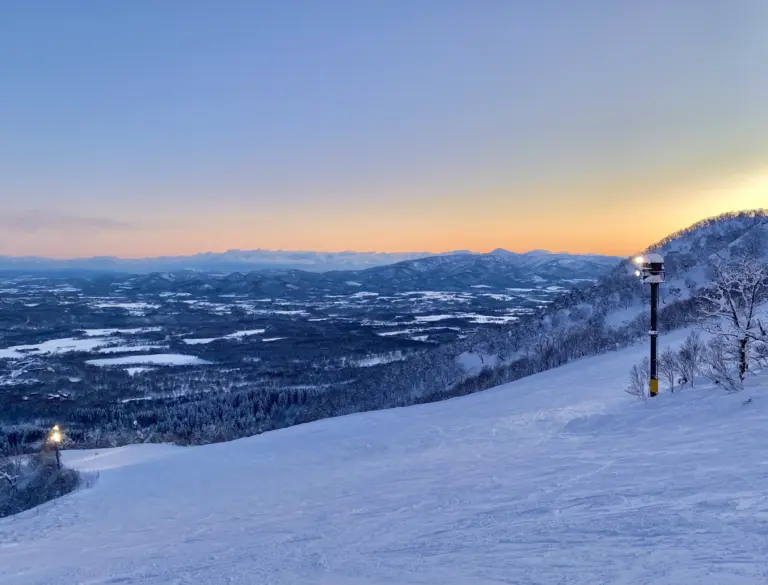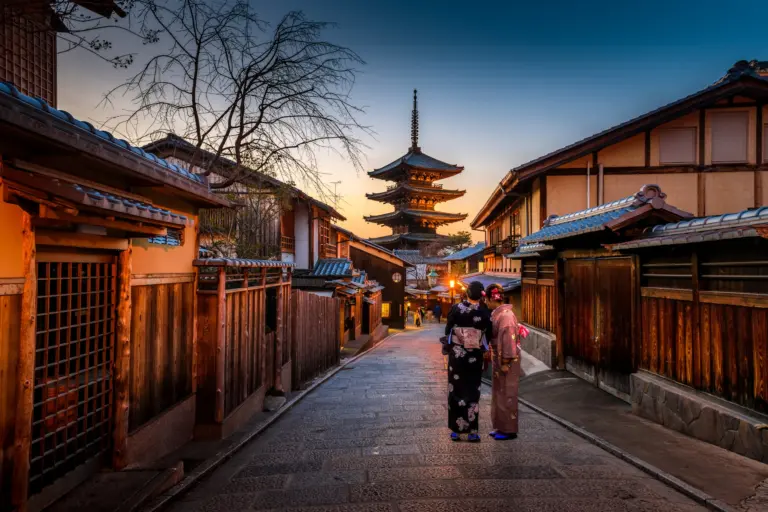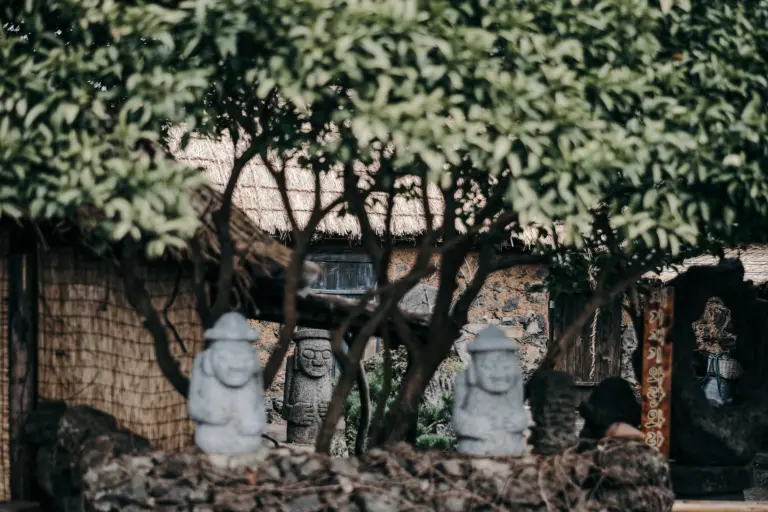Ta Prohm was definitely one of the highlights in our trip to Cambodia. It really stood out, hidden deep in the jungle, we made our way and parked our e-bikes and went further inside.
What makes Ta Prohm truly unique was the vegetation growing out of everywhere. Almost like the temple and the jungle were merging into one. It had numerous humongous trees perched on top of various parts of the temple. The vibes here were so different compared to any other temple we visited that day, the energy was immense, like we were no longer in Angkor Park.
There were moss covering almost every wall and these white trees and roots that seemed to twist and turn into various shapes, swallowing the temple whole. It really made me wonder just how did things end up the way they did and how long did it take to even reach this state?
Well to answer all our burning questions, I’ve created this in-depth blog post that goes through all you need to know about Ta Prohm including the facts, history, and architecture!
Table of Contents
ToggleWhere to Stay in Siem Reap
Siem Reap is a very small town and you can find most places close to each other and all within 15 – 30 minutes from Angkor Archaelogical Park, including Ta Prohm. Here are some of my recommendations:
Best Hotels in Siem Reap
- Han & Daniel Villa Boutique – this is where we personally stayed and what can I say except that it was a blast! The location is conveniently located near most of the sites that we went to around town such as the Phare Circus and the e-bike rental shop. The rooms were spacious and a good bathroom. The beds were great too. They had parking spaces for our bikes with an in-house restaurant for whenever we were lazy to get food outside. Daniel kindly helped us with a lot of stuff too such as an airport pick-up, airport drop-off, and helping us get tickets to Angkor Archaeological Park. The best part was the pool which we were taking a dip in every day!
- Two Seasons Siem Reap Hotel – offers an outdoor pool, free private parking, and a range of services including room service, a 24-hour front desk, and free WiFi. The rooms are air-conditioned, with a desk, flat-screen TV, and private bathroom.
- Damrei Residence & Spa – offer a flat-screen TV, and a seating area. You can enjoy the garden or city views while relaxing with a cup of tea. All rooms have a private bathroom with bathrobes, slippers, and complimentary toiletries.
- Onederz Hostel Siem Reap – a clean, comfortable, and friendly place to stay. With its well-designed layout and premium amenities, including three swimming pools, this hostel offers a high-quality experience.
- Mad Monkey Siem Reap – offers a range of room options, a fantastic pool, and an incredible bar and restaurant serving both local and Western cuisine. At Mad Monkey, you’ll have the opportunity to connect with fellow fun-loving travelers from all around the globe.
- Lub d Cambodia Siem Reap – featuring a Khmer-chic inspired design, Lub d Siem Reap boasts a swimming pool with a swim-up pool bar, inviting lounging areas, and a games area with a pool table and Pacman arcade game. You can indulge in all-day breakfast, expertly brewed coffee at The PumpHouse, and quick snacks from the Grab & Go counter.
What to Know About Ta Prohm Temple
1. What is Ta Prohm Temple?
Ta Prohm is one of the most mindblowing sites in Angkor Archaeological Park. It’s a temple complex that has been deliberately left in much the same condition as it was found as if it was trapped in time.
What makes Ta Prohm stand out in a sea of Cambodian temples? I really feel that it’s the intimacy between nature and architecture. Here, centuries-old tree roots have intertwined with the temple stones, as though the surrounding jungle is trying to consume the temple itself!
2. Where is Ta Prohm Temple?
Ta Prohm temple is located in the Angkor region of Cambodia. It’s situated north of Siem Reap and not far from the more famous Angkor Wat.
Location: Ta Prohm
Opening Hours: 7:30 AM – 5:30 PM
Pro-tips:
- Don’t be afraid to stray from the main route and explore other spots as you’ll find plenty of interesting spots with much more.
- The long hall (you’ll know it when you see it) makes for an excellent photo spot that’s not found in any other temple.
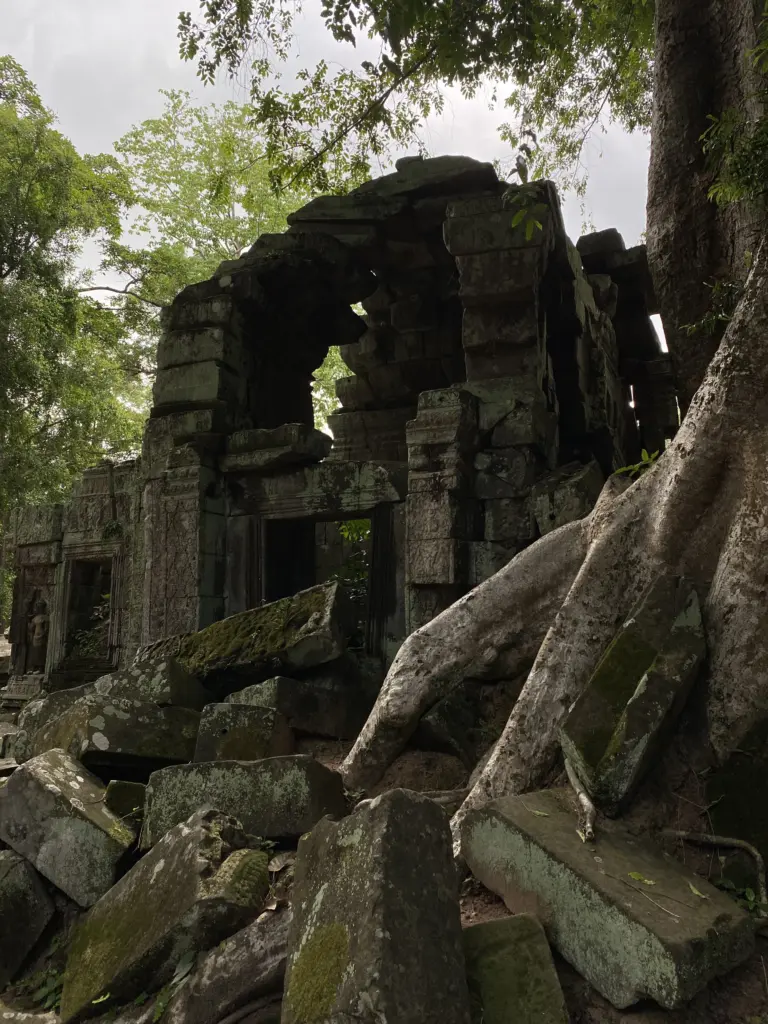
3. What is the Significance of Ta Prohm Temple?
Ta Prohm was initially known as Rajavihara, or “the royal monastery.” The temple was both a monastery and university, dedicated to the king’s mother. As you walk around the ancient corridors, you can try to imagine the flurry of monks, scholars, and students that once roamed its hallways!
Fast forward to the present, it’s one of the few temples that has been preserved in the same condition as it was discovered: still partially swallowed by the jungle. This intentional preservation helps us see what the early explorers saw when they first stumbled upon Angkor.
4. Ta Prohm Temple Size
Ta Prohm Temple’s compound itself, within its outermost walls, spans approximately 650 m (2,133 ft) east to west and 1,000 m (3,281 ft) north to south. The central sanctuary area is about 150 m (492 ft) by 150 m (492 ft).
The sprawling nature of Ta Prohm, combined with the overgrown vegetation, gives it a labyrinthine quality and for us, it definitely felt bigger than the rest of the temples out there!

5. Ta Prohm Temple Dress Code
While Ta Prohm isn’t that strict compared to other temples such as Angkor Wat and Bayon, it’s still best to wear clothing that covers the shoulder and knees.
In Angkor Wat and Bayon, there are some areas that will be inaccessible if you’re not properly covered, specifically the upper terraces.
6. Ta Prohm Temple Tours
There are several tours going to Ta Prohm Temple and other nearby sites through GetYourGuide, if you’re interested you can join one through here.
Ta Prohm Temple History
7. Who Built Ta Prohm Temple?
Ta Prohm Temple was built by the Khmer King Jayavarman VII, who reigned from approximately 1181 to 1218. As one of the most significant and prolific builders among the Khmer kings, Jayavarman VII embarked on a massive construction program across the empire. He is credited with building the city of Angkor Thom, the state temple of Bayon, and many other significant structures, including Ta Prohm.
King Jayavarman VII was one of the most powerful rulers of the Khmer Empire, which spanned present-day Cambodia, Thailand, Laos, and southern Vietnam. His reign, from approximately 1181 to 1218, marked the peak of the empire’s influence.
He was a Mahayana Buddhist, and his religious beliefs played a central role in his rule and his construction projects. He is also credited with leading a significant shift toward Buddhism in the Khmer Empire, which had previously been predominantly Hindu.
8. How Old is Ta Prohm Temple?
Ta Prohm temple’s was built in the late 12th to early 13th century, around 1186 so it’s more than 830 years old! While the temple’s initial construction began in the late 12th century, additional structures were added were made over the subsequent centuries, meaning that parts of the temple are actually younger than the original foundation.
9. Why was Ta Prohm Temple Built?
Beyond its religious and educational purposes, the temple held a deeply personal significance for the King.
Jayavarman VII constructed Ta Prohm in honor of his family. The temple’s central sanctuary was dedicated to the King’s mother while the temple’s satellite temples were devoted to his guru, his elder brother, and his sons.
His intention was not only to demonstrate the grandeur of the Khmer Empire but also to acquire religious merit and to ensure the welfare of his people.
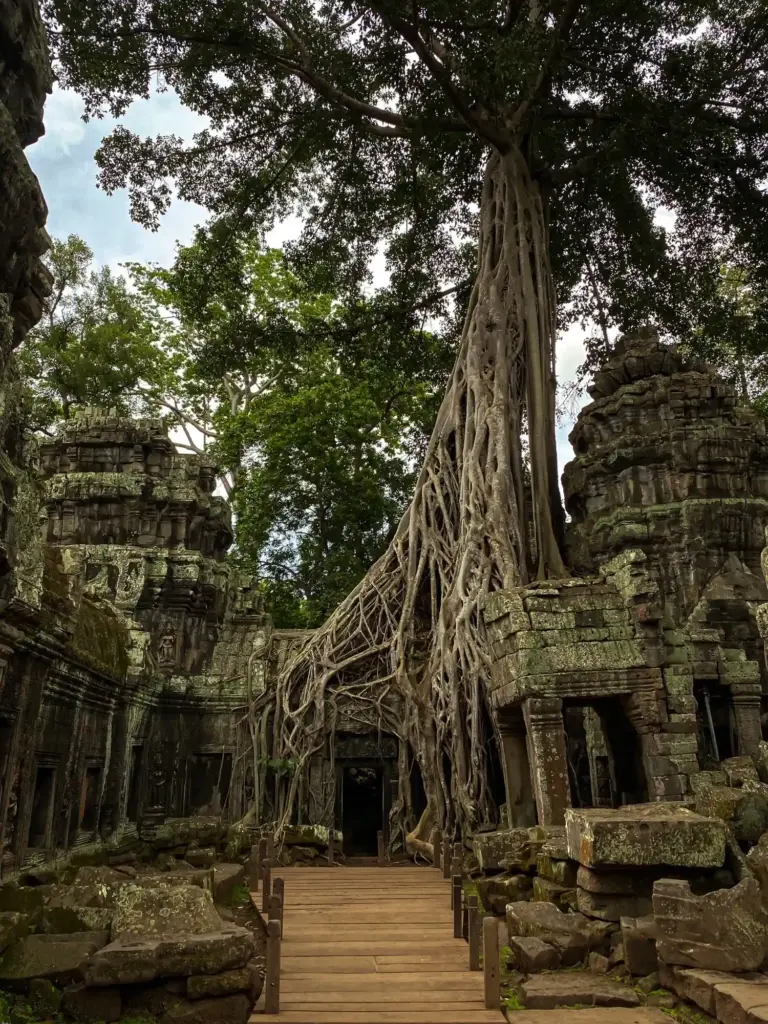
10. Why was Ta Prohm Temple Abandoned?
Ta Prohm was gradually abandoned and left to the encroaching jungle after the fall of the Khmer Empire in the 15th century. The empire’s decline started in the 14th century and was further hastened by a series of invasions by the Siamese.
While the exact reasons for the abandonment of Ta Prohm and the other Angkor temples are not definitively known, several factors likely contributed. These include the aforementioned political and military decline, changes in religious practices (with Theravada Buddhism becoming more prevalent, which required less grandiose religious monuments), environmental changes, and problems with the complex irrigation system upon which the city depended.
11. When was Ta Prohm Temple Discovered?
Ta Prohm, along with the rest of the temples in the Angkor region, was never really “lost” to the local Khmer people, who have lived in the area and continued to use and visit the temples throughout history. It was, however, brought to international attention by the French explorer Henri Mouhot in the mid-19th century. So in this case, it’s not really “discovered” per se but more like “shared” instead.
12. Ta Prohm Temple Timeline
- 1186 AD: King Jayavarman VII dedicates Ta Prohm to his family, as evidenced by inscriptions.
- Late 12th – early 13th century: Ta Prohm is expanded and further developed under Jayavarman VII and his successors.
- 15th century: The Khmer Empire goes into decline, and many temples at Angkor, including Ta Prohm, are gradually abandoned.
- 16th century: Some limited maintenance and restoration work continues to take place. The temple is used by a Buddhist university.
- 1860: French naturalist Henri Mouhot visits Angkor and writes about the temples, bringing them to the attention of the Western world.
- 1908: The French colonial authorities begin a restoration project on Ta Prohm, led by the Ecole Francaise d’Extreme Orient (EFEO). They decide to leave Ta Prohm in a “natural state” as an example of how most of Angkor looked on its discovery.
- 2001 – present: A major restoration project is conducted at Ta Prohm by the Archaeological Survey of India.

Ta Prohm Temple Architecture
13. What is Ta Prohm Temple Made Out of?
Ta Prohm temple is primarily constructed from sandstone. Sandstone was the material of choice for religious structures during the Angkorian period.
In addition to sandstone, laterite – a kind of soil rich in iron and aluminum – was also used, particularly in the temple’s foundations and enclosure walls.
The extensive bas-reliefs and devatas (guardian spirit carvings) which grace the walls of Ta Prohm were also carved directly from the sandstone.
14. How was Ta Prohm Temple Built?
Ta Prohm was constructed using a method quite characteristic of the Khmer Empire’s architectural techniques.
Builders would start by carving out enormous blocks of sandstone from quarries up to 50 km (31 mi) away. These blocks, some weighing up to 1.5 tons, were then transported by a network of canals to the construction site.
When it came to the actual construction of the temple, the ancient Khmer builders employed a technique known as corbelling to create the arches and roofs of the temple. Rather than using arches, which distribute weight evenly down each side, corbelling involves stacking each successive layer of blocks inward, until they meet at the top.
As for the intricate bas-reliefs and carvings adorning the walls and pediments, artisans would finish these once the building was constructed. Often, they would cover the walls with a layer of stucco before carving, allowing for greater detail in the artwork.
The entire construction process was driven by manual labor and ingenuity, making the grandeur of Ta Prohm all the more impressive.
Ta Prohm Temple Facts
15. What are the Trees in Ta Prohm Temple?
The Ta Prohm temple is iconic for the giant trees that intertwine with its ancient stone structures. Two species are most notable: the sponge tree, also known as the silk-cotton tree (tetrameles nudiflora), locally known as the “thitpok” tree.
These trees are marvels in their own right, their roots sprawling and winding over, around, and through the temple ruins. This display of nature reclaiming man-made edifices has created an ambiance of stepping back in time.
16. What Religion is Ta Prohm Temple?
Ta Prohm temple is associated with Mahayana Buddhism just like Bayon Temple. The king regarded his own mother as the incarnation of Prajnaparamita, the personification of wisdom in Mahayana Buddhism. However, elements of Hinduism can also be seen in the temple, reflecting the religious syncretism of the Khmer empire.

17. What is the Translation of Ta Prohm?
Ta Prohm translates from Khmer to English as “Ancestor Brahma.” “Ta” can be translated as “ancestor,” and “Prohm” is the local version of “Brahma,” the Hindu god of creation.
I also noticed that in Thailand’s version of the Ramayana (known as the Ramakien), Brahma is also referred to us “Phra Phrom.” You can find the Ramayana in the bas-reliefs of many temples, including Angkor Wat.
18. What is Ta Prohm Temple Famous for?
Ta Prohm temple has deservingly earned its name as the “jungle temple.” While most temples are located within the jungles of Siem Reap, Ta Prohm knocks everything else out of the park. Why?
Firstly, Ta Prohm gained a large chunk of its fame from the 2001 Hollywood movie “Tomb Raider,” where Angelina Jolie as Lara Croft maneuvered through the temple ruins, making it a favorite among movie fans. With this, it’s also earned the moniker “Tomb Raider Temple.”
The temple is also renowned for its distinctive Bayon style of architecture, including its stone carvings and bas-reliefs. We were easily captivated by the hauntingly beautiful atmosphere of the temple and its surroundings.
19. Ta Prohm Temple Stegosaurus Dinosaur Carving
The famous “dinosaur” at Ta Prohm! This has sparked so much speculation. I won’t spoil for you what it looks like but I can give you a hint on where to find it as you go on your own treasure-hunt around the temple. The so-called “stegosaurus carving” is actually located in the inner enclosure of the temple, near the entrance of the sanctuary.
Since the relief in question appears to resemble a dinosaur (specifically a stegosaurus due to the plates along its back), it has led some people to wonder if the ancient Khmer civilization could have had knowledge of dinosaurs, suggesting that the image was either inspired by paleontological discoveries or, for some, it even suggests the coexistence of humans and dinosaurs, challenging our current understanding of the earth’s history.
However, the majority of archaeologists and historians remain skeptical of these interpretations. They argue that the “dinosaur” is likely a depiction of a rhinoceros or a chameleon, animals that are native to the region and were familiar to the Khmer people.
Some even suggest that the supposed plates could be the artist’s attempt to depict a background of leaves, a common feature in many of the temple’s other reliefs.
I for one, think it’s more fun to believe in the Khmer and dinosaur connection!
Plan Your Trip to Siem Reap | Best Travel Resources
Book Your Accommodations
- Booking.com – the world’s leading online booking platform for accomodations around the world, they have an extensive amount of available listings with zero booking fees and best price guarantees.
- Hostelworld – a backpacker’s best friend, Hostelworld has the largest collection of hostels and guesthouses for affordable prices.
Don’t Forget Insurance
- SafetyWing – from Nomad Insurance, an insurance by nomads for nomads. They understand our lifestyle well and have really comprehensive and flexible plans that cater to any traveler.
Find Cheap Flights
- Kiwi.com – my go-to for booking and finding the cheapest flights and it’s helped me save tons of money. They do virtual interlining which is connecting flights from airlines that do not codeshare, so you can find routes that you wouldn’t be able to find normally.
Join Tours & Activities
- GetYourGuide – is one of the best places to find unique tours and activities. I found that it’s an excellent way to meet fellow travelers and create fond memories. They are not only limited to tours as they also offer niche services such as skip-the-line tickets or private transfers.
Catch a Ride
- Rentalcars.com – nothing beats the freedom of the road, Rentalcars.com is the world’s largest online car rental service. They operate across 160 countries so they’re the perfect partner to work with if you find yourself wanting a ride.

